Easy & Delicious: A Pickled Quail Eggs Recipe for Beginners
Quail eggs are tiny, but they taste great, especially when pickled. Learn how to make homemade pickled quail eggs that will wow everyone.
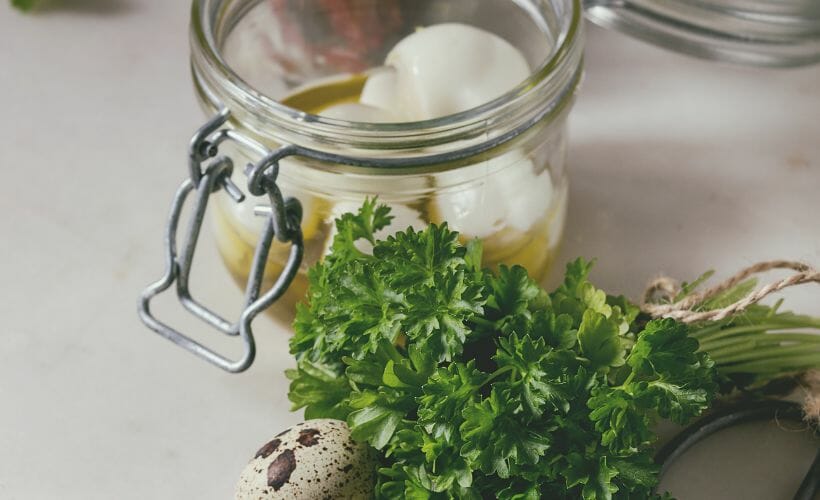
Have you ever wanted to make pickled quail eggs but thought the canning process was a bit intimidating? You’re in luck – it’s surprisingly easy to make delicious pickled quail eggs without the fuss of canning. Not only will you be able to make a healthy, protein-packed snack to enjoy, but you will also have the confidence to put your own spin on the traditional recipe.
So grab your eggs and prepare to make some seriously tasty pickled quail eggs.
How to Make Pickled Quail Eggs
You can enjoy tasty, homemade pickled quail eggs in no time by following a few simple steps. This recipe is for a single batch, requires no canning, and takes less than 10 minutes from start to finish.
Hard Boiling Quail Eggs
Once the water starts to boil, put the eggs in and start the timer. Don’t put the eggs in the cold water, or they will overcook. You can add a pinch of baking soda at this stage to make it easier to peel the eggs later. Hard boil quail eggs take approximately 4½ minutes. Immediately cool eggs in a bowl of ice water.
How to Peel Quail Eggs
Peeling is something that some people may find to be obvious and naturally easy, at least with chicken eggs. However, the quail egg’s size means that it will inevitably be more delicate. There are two ways to peel a quail egg. I’m partial to Method 2 when I’m pickling.
Method 1: Peel it like a chicken egg.
- Put down a paper towel on a clean surface. This is necessary to catch the pieces of eggshells that come loose.
- Take each egg from the ice bath where they have cooled.
- Gently tap the egg atop a hard surface just firmly enough to crack the eggs.
- Roll each egg on a surface to crack the remnants of the egg. When doing so, ensure that you take a delicate hand. The reason is that when placing too much pressure, you are likely to crush your quail eggs inadvertently.
- Remove any of the shell pieces left from the egg and the membrane surrounding each egg.
Method 2: Dissolve the shell in vinegar.
- Put hard-boiled quail eggs in a jar and pour in distilled white vinegar until the eggs are completely submerged in the vinegar.
- Leave the jar for around eight hours in order for the shells to fully dissolve.
- Once the shells are dissolved, use a strainer or colander to remove the vinegar from the eggs.
- Gently wash the eggs to remove any small remaining fragments along with the vinegar.
- Using your fingers, remove the membrane from each of the eggs. To do so, hold the bottom of the egg with one hand and use the thumb and index finger of your other to pinch the egg’s membrane.
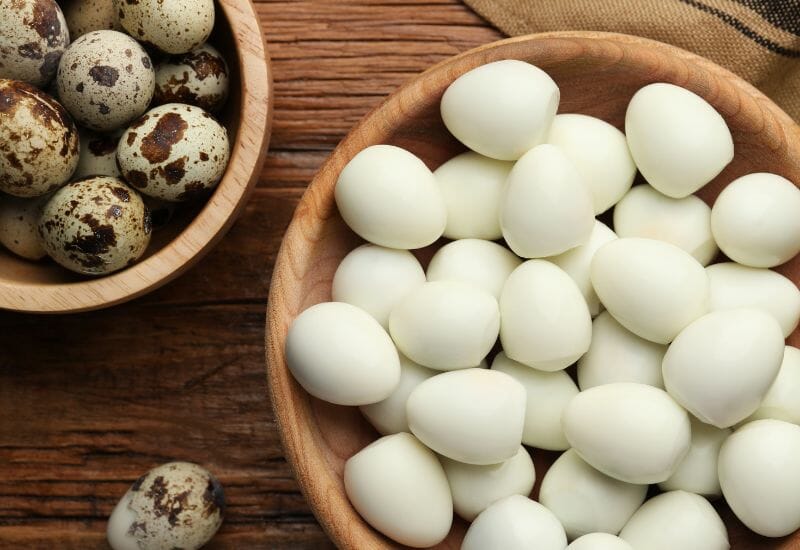
Sterilize the Jars
To ensure successful pickling, it is important to sterilize the pickling jars and lids thoroughly. This can easily be done by boiling them in a pot of water for 10 minutes or using the sanitize function on your dishwasher.
How many quail eggs fit in a jar?
The number of quail eggs that can fit in your jar depends on the size of the eggs. Despite being referred to as “teeny,” these eggs do come in various tiny sizes. Typically, I can fit 12 eggs in a half-pint jar, 30 in a pint jar, and 60 in a quart jar.
Make the Pickling Brine
The flavor of this brine is a little bit like dill pickles but with the flavor of an egg added to it. Feel free to adjust the amount of each ingredient added to customize the taste. You can also add things like jalapenos, crushed red pepper, or cayenne powder if you’re feeling adventurous and want to bring the heat.
This recipe is for a half-pint. Scale up for larger batches.
- 12 hard-boiled quail eggs
- 1 cup vinegar
- 1 teaspoon of salt
- 1 sprig of fresh dill
- 1 pinch of fresh parsley (chopped)
- 3 cloves of garlic (roughly chopped)
- 2-4 whole cloves
- 8 whole peppercorns
- Optional: 1 teaspoon of red pepper flakes or cayenne powder
Roughly chop your garlic.
In a saucepan, bring your vinegar to a boil. Add in the spices: peppercorns, whole cloves, garlic, and salt. (Add in any additional ingredients, such as cayenne powder and/or red pepper flakes now.) Stir to combine until the salt is fully dissolved.
Assembling Your Jars
Place your sprig of fresh dill and a pinch of chopped parsley in the bottom of your jar. (Add jalapenos at this stage if you’ve chosen to use them.) Place your peeled eggs in the jar on top.
Pour the hot pickling brine over the eggs. Use a knife, fork, spoon, or chopstick to carefully move the eggs around a bit to ensure no air bubbles in your pickling mixture.
Place the lid on the jar. Store in your refrigerator for one week before enjoying so the flavors have a chance to absorb into the eggs.
How Long Do Pickled Quail Eggs Keep?
Your pickled quail eggs will last for up to 3 months in the refrigerator (per The National Center for Home Food Preservation guidelines). To ensure you get the best quail egg experience, it’s important that they are kept cool and completely submerged in the brine.
If you’re looking to make large batches of pickled eggs that can be canned for long-term storage, check out the Food Network’s recipe.
What To Do With Pickled Eggs?
Pickled quail eggs can be enjoyed the same way you’d enjoy ordinary pickled eggs.
- Make egg salad with pickled eggs to add even more pizazz to your sandwiches, or add them to your potato salad instead of ordinary hard-boiled eggs.
- Slice them and top your salad with pickled eggs to give it a protein punch.
- Serve them on a charcuterie board with a variety of cheese.
- Snack on them right from the jar. This happens to be our favorite way to enjoy pickled quail eggs.
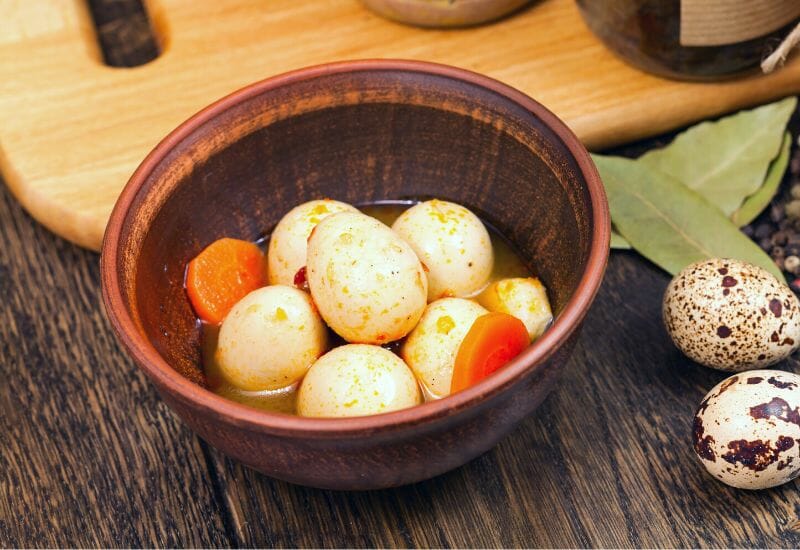
More Quail Egg Recipes
When it comes to cooking with quail eggs, the possibilities are endless. From baked goods like muffins and cupcakes to savory dishes like omelets, mini crustless quiches, and frittatas, the options for incorporating this delicacy into the next meal are virtually limitless.
Stir fries, salads, and soups can all be enhanced with a sprinkle of quail eggs, while meaty dishes like sliders and burgers can get an unexpected flavor boost.
Quail eggs can also be used instead of chicken eggs in breakfast dishes or served as deviled eggs for an appetizer that’s sure to wow.
Whatever you decide, you can rest assured that your meal will be unlike any other.
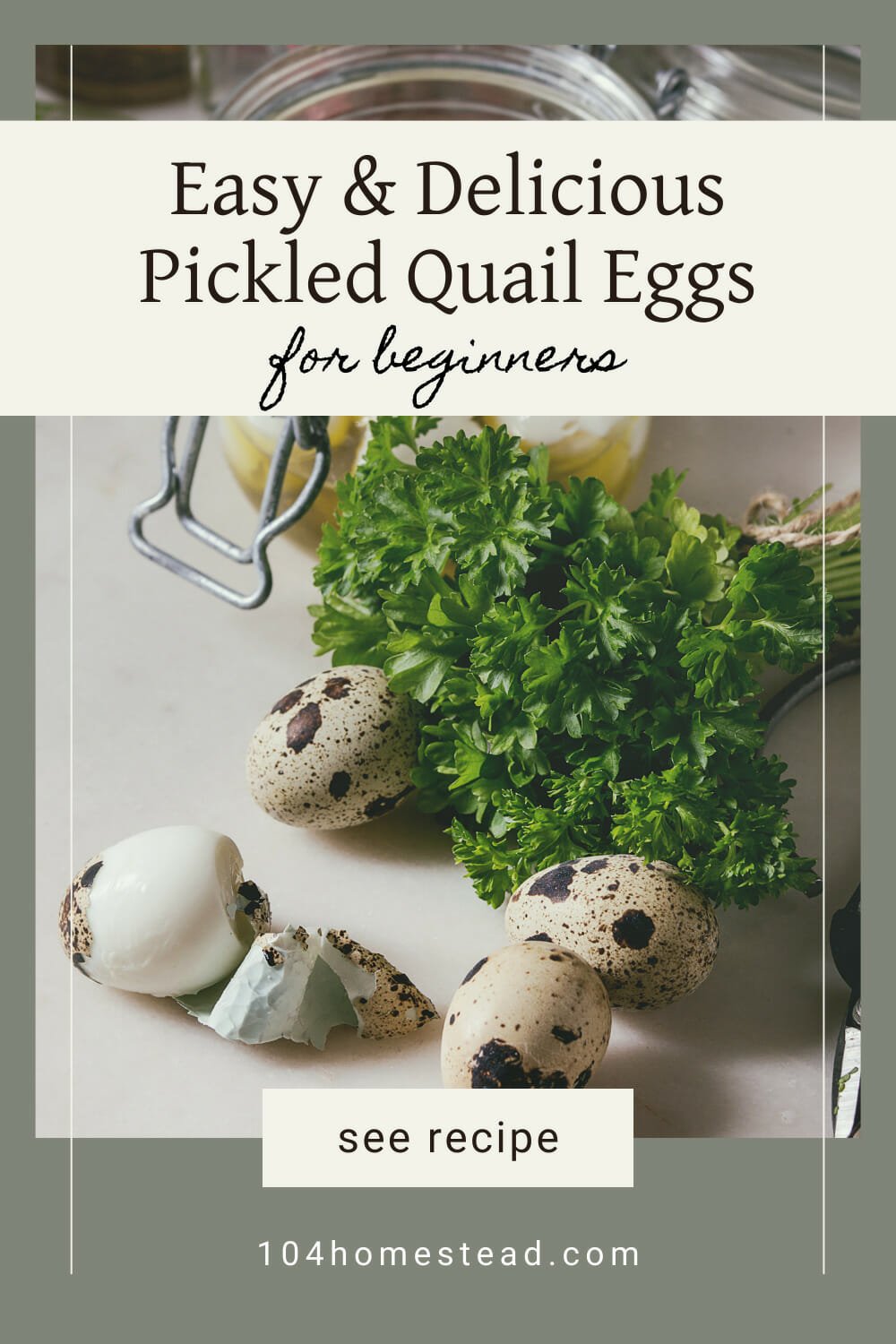
Pickled quail eggs offer a delightful twist to your culinary repertoire, bringing a burst of flavor and a touch of novelty to your table. Whether you’re a seasoned pickling enthusiast or a curious foodie, the simplicity of this recipe makes it accessible to all. Elevate your appetizer game with these tangy, bite-sized treats—perfect for gatherings or a savory solo indulgence.
Don’t forget to share your pickling adventures and creative twists in the comments below!
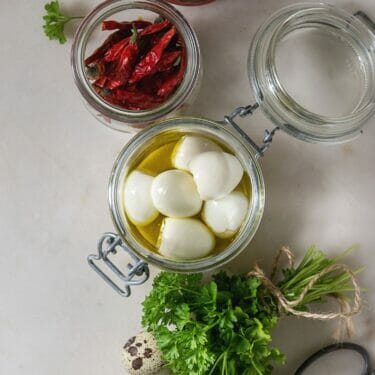
Delicious Refrigerator Pickled Quail Eggs for Beginners
This post may contain paid links. If you make a purchase using the links in this recipe, I may earn a commission.
Equipment
- 1 1/2 Pint Mason Jar
Ingredients
- 12 Quail Eggs
- 1 c. White Vinegar
- 1 tsp. Kosher Salt
- 1 sprig Dill fresh
- 1 pinch Parsley fresh, chopped
- 3 cloves Garlic chopped
- 2-4 Cloves
- 8 Peppercorns whole
- 1 tsp. Red Pepper Flakes or Cayenne Pepper optional
Instructions
- Hard boil your eggs and allow them to cool so you can peel them.12 Quail Eggs
- In a saucepan, bring your vinegar to a boil. Add in the spices.1 tsp. Kosher Salt, 3 cloves Garlic, 2-4 Cloves, 8 Peppercorns, 1 c. White Vinegar
- Add additional ingredients, such as cayenne powder and/or red pepper flakes, if you desire.1 tsp. Red Pepper Flakes or Cayenne Pepper
- Stir to combine until the salt is fully dissolved. Remove from heat.
- Place your sprig of fresh dill and a pinch of chopped parsley in the bottom of your jar. Add jalapenos at this stage if you’ve chosen to use them.1 pinch Parsley, 1 sprig Dill
- Place your peeled eggs in the jar on top.
- Pour the hot pickling brine over the eggs. Use a knife, fork, spoon, or chopstick to carefully move the eggs around to ensure no air bubbles in your pickling mixture.
- Place the lid on the jar. Store in your refrigerator for 1 week before enjoying so the flavors can absorb into the eggs.
